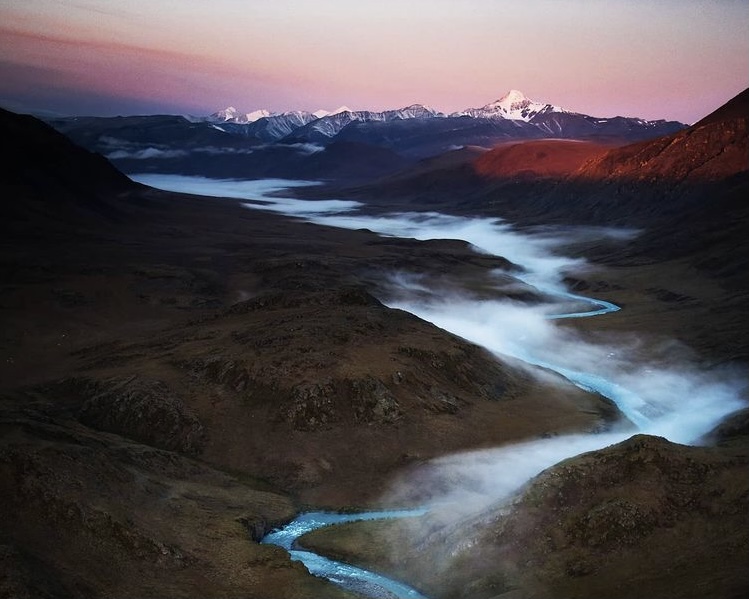Help Save the Arctic
The Arctic National Wildlife Refuge is a beautiful natural area in Alaska.
February 4, 2021
The Trump Administration has pushed for oil drilling in the Arctic for three years now. Oil and other natural resources are highly valuable because they are finite and profitable. Oil is used for fuel and is in high demand for household heating systems, car gasoline, asphalt, and more. We use it in our everyday lives and we may not even know it.
Originally, the Arctic National Wildlife Refuge was established in Alaska by President Dwight Eisenhower in 1960. Its purpose was to maintain some of the natural environment when the oil and natural gas industries were rapidly growing. It is managed by the United States Fish and Wildlife Service so officials can help protect and defend wildlife and natural habitats. Hundreds of species such as birds and polar bears are native to this land. Natives like the Gwich’in people and the Inuit live within the region as well. There are no roads here and little visitation by outside people is allowed to limit the amount of human interference and in turn, prevent the amount of damage done in the area.
Now in the 21st century, the Trump Administration has fought hard and persistently to allow for oil drilling and hydraulic fracturing – commonly known as “fracking” – in the Arctic. Fracking is a highly controversial practice regarding the extraction of oil. Supporters claim it is safe and highly profitable while naysayers argue it is too dangerous and can endanger our own personal safety through water contamination. The benefits of oil drilling in the area are clear: a higher profit and the ability to further withstand the depletion of oil. Since we as humans rely so heavily on it, it would be a big change if we were to switch to another source of energy whether it be because the crude oil has run out or through our choices to increase our sustainability. Sustainable practices allow for future generations to meet their own needs and it preserves the natural Earth. The fight for oil drilling has lasted for many presidencies but the Trump Administration has gotten extremely close to winning.
Many people, the majority of whom are Democrats, are opposed to this plan. Allowing for fracking would defeat the original purpose of the Arctic National Wildlife Refuge. Fracking requires the area to be prepared for the drilling and to ensure the scene is safe, which would force the native people and animals to be forced elsewhere. They can not interfere with the process so if their natural habitats are where drilling was planned to take place, they would be forced off their own land. The Gwich’in people rely a lot on the caribou and the Iñupiat people rely more on the ocean, both of which provide food, clothes and other necessities. Furthermore, it would not be very cost-effective. It is extremely expensive to explore a new area and to perform oil drilling. Energy companies need to be careful when spending money and they also need to maintain a good reputation among other companies and their consumers. If the oil drilling fails, the company who owns the lease for the area would be held accountable and it would be harder for their work as an energy company to continue. With the coronavirus present now, there is even less of a chance for energy companies to display interest in the Arctic National Wildlife Refuge since they have to focus on salvaging what the virus has destroyed. Environmentalists advocate against it because burning oil increases greenhouse gas emissions and in turn, increases global warming. Burning oil releases dangerous gases such as sulfur, mercury, and lead and can lead to air pollution and health problems.
The lease for the Arctic National Wildlife Refuge went for sale in early January this year. It was reported that no major oil companies were attracted to this site and only a couple companies showed up to the bidding. Little attraction means there would be little profit, which means that drilling in the Arctic would not be as lucrative as President Trump had hoped. This would help discourage drilling here and is a good sign for opposers that the area would not be used for the consumption of natural resources.
President Joe Biden was inaugurated on January 20th, 2021. He became the 46th President of the United States and he is spreading the idea that his presidency will fix whatever President Trump has ruined. This can be shown through his policies regarding the Arctic. He has publicly stated that he would fight to combat climate change during his presidential campaign and this is part of that idea. When he finally began to serve in office, many wrote letters or emails to President Biden against the idea of drilling in the Arctic. On his first day in office, he passed an executive order that prohibited the Secretary of the Interior from getting involved in new oil and gas leases. It also requires input from native tribes in areas subjected to energy resource extraction. This includes the lease for the Arctic National Wildlife Refuge. He did this to lessen the amount of oil and natural gas we burn as a nation but it also helps protect native people and animals in areas. He also has an ambitious goal to fight climate change, which can be achieved by protecting the Arctic since that would prevent further gas emissions. This executive policy is only temporary, but it can be made permanent later on in his years in office.
As citizens of the United States, we can help save the Arctic and the indigenous people and animals there. We can write to President Biden, telling him how strongly encouraged it is to prevent the Arctic from becoming another oil drilling site. Hearing from the people is what helps a strong presidency to continue. The government has already received almost 6 million letters pleading for this process to cease. Doing “too much” is not possible in this case; we should do everything in our power to help save the region. We can also spread the word about what is happening. Many remain unaware of the situation and how dire it is. Educating others helps the movement gain traction and the more supporters it has, the more powerful it would be. There are accounts on social media – like @prothearctic on Instagram – that consistently educate the public of new updates. There are also websites dedicated to this like www.protectthearctic.org. These updates are crucial to being a part of the movement to protect the Arctic and can help you become a better educator for your peers. We cannot wait until it is too late, the Arctic is too valuable to become another place on a list of oil sites. Time is precious in this case; let’s do as much as we can now to help the Earth in the long run.


